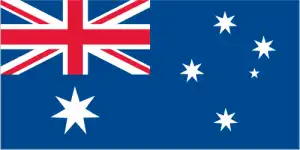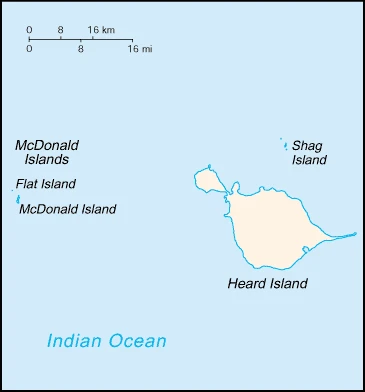Heard Island and McDonald Islands Google Maps is a site/tool that offers a wide range of map views (topographic, satellite, street view) and navigation options, with little effort on your part, yet efficiently. If you need to plan a trip to a new place like Heard Island and McDonald Islands, Google maps are available on desktop, mobile, or tablet. This Google maps and information page is dedicated to Heard Island and McDonald Islands, Antarctic Region (4 countries), showing its location, country facts, and plenty of other information which may be interesting when you visit this Antarctic state.
Quick links: Google Maps Heard Island and McDonald Islands, Driving Directions Heard Island and McDonald Islands, Printable Road Map.

About Heard Island and McDonald Islands in a nutshell
- Conventional short form of the name: Heard Island and McDonald Islands
- The conventional long form of the name: Territory of Heard Island and McDonald Islands
- Etymology: named after American Captain John HEARD, who sighted the island on 25 November 1853, and American Captain William McDONALD, who discovered the islands on 4 January 1854.
- The legal system in Heard Island and McDonald Islands: the laws of Australia apply where applicable.
- Climate: Antarctic.
- Internet TLD: .hm
Background
American sailor John HEARD discovered Heard Island in 1853 and thought it was a glacier that had broken away from Antarctica. Fellow American William MCDONALD discovered the McDonald Islands the following year. Starting in 1855, sealers lived on the islands harvesting elephant seal oil. By the time the practice was ended in 1877, most of the island’s seals were killed. The UK formally claimed the islands in 1910 and Australian explorer Douglas MAWSON visited Heard Island in 1929. In 1947, the UK transferred the islands to Australia for its Antarctica research, but Australia closed the research station on Heard Island in 1954 when it opened a new research station on the Antarctic continent. McDonald Island has been an active volcano since it emerged from dormancy in 1992, and the island doubled in size after an eruption in 1996. In 1997, the islands were named a UNESCO World Heritage Site. Populated by a large number of bird species, seals, and penguins, the islands are primarily used for research with limited fishing being permitted in the surrounding waters.
Geography

Heard Island and McDonald Islands are two small islands in the Southern Ocean located around 1450 miles south of Australia. They were discovered by members of Captain James Cook’s crew during his third voyage to the southern hemisphere, in 1774.
This state is located in Islands in the Indian Ocean, about two-thirds of the way from Madagascar to Antarctica, under the coordinates of 53 06 S, 72 31 E, covering an area of 412 sq km with a coastline of 101.9 km. Heard Island and McDonald Islands is Slightly more than two times the size of Washington, DC.
Heard island – 80% ice-covered, bleak and mountainous, dominated by a large massif (big ben) and an active volcano (Mawson peak), McDonald islands – small and rocky, with Mawson peak on big ben volcano 2,745 m as the highest point of Heard Island and McDonald Islands, while Indian Ocean 0 m as the lowest point. With a total of 412 sq km, Heard Island and McDonald Islands have 412 sq km of land and 0 sq km water surface area.
Mawson Peak on Heard Island is the highest Australian mountain (at 2,745 meters, it is taller than Mt. Kosciuszko in Australia proper), and one of only two active volcanoes located in Australian territory, the other being McDonald Island; in 1992, McDonald Island broke its dormancy and began erupting; it has erupted several times since, most recently in 2005
The climate in Heard Island and McDonald Islands is as follows: Antarctic.
When you visit Heard Island and McDonald Islands, the natural hazards shall be considered: Mawson peak, an active volcano, is on Heard Island.
The following major health-threatening issues shall be considered when visiting Heard Island and McDonald Islands: none.
Current environmental issues affecting the people: none; uninhabited and mostly ice-covered.
Google Maps Heard Island and McDonald Islands
The capital and other divisions
Heard Island and McDonald Islands are in the southern Indian Ocean and are considered to be part of Antarctica. They are considered a territory of Australia and have a population of about 2,000 people. The islands have been mentioned in the press many times due to their unique or unusual flora, fauna, and landscapes.
People and society
Heard Island and McDonald Islands are uninhabitable.
Industry
The islands have no indigenous economic activity, but the Australian Government allows limited fishing in the surrounding waters. Visits to Heard Island typically focus on terrestrial and marine research and infrequent private expeditions.
Heard Island and McDonald Islands are rich in the following natural resources: Fish.
Land use in Heard Island and McDonald Islands: N/A forest, 100% (2018 estimate) other.
Heard Island and McDonald Islands Driving Directions
In this post, you learned about Heard Island and McDonald Islands, Islands in the Indian Ocean, about two-thirds of the way from Madagascar to Antarctica.
Are you interested in visiting Heard Island and McDonald Islands and looking for driving directions? Click here to plan your route, or see a printable road map of Heard Island and McDonald Islands below for an overview of the route network.
Printable map of Heard Island and McDonald Islands

Did you know about Heard Island and McDonald Islands?
Heard Island and McDonald Islands are uninhabitable but still remain as a natural reserve. They are located in the Southern Indian Ocean and are recognized by the UNESCO World Heritage Committee for their exceptional universal value. They serve as the primary breeding ground for several species of seabirds and also support various marine mammals.
After virtually visiting Heard Island and McDonald Islands, you may also be interested in the neighboring countries: none.
If you liked our Google map and Heard Island and McDonald Islands information page,
please share it with others or save the link https://www.drivingdirections.net in your bookmarks.
